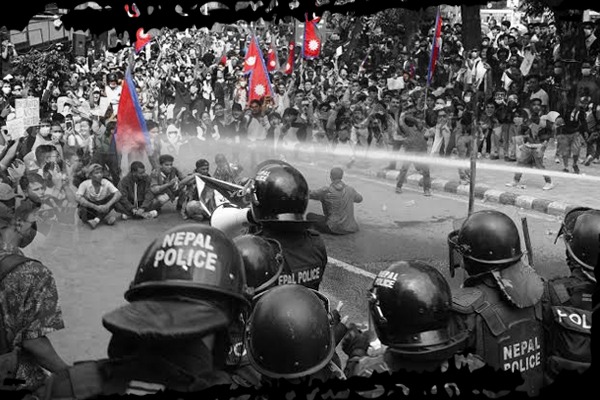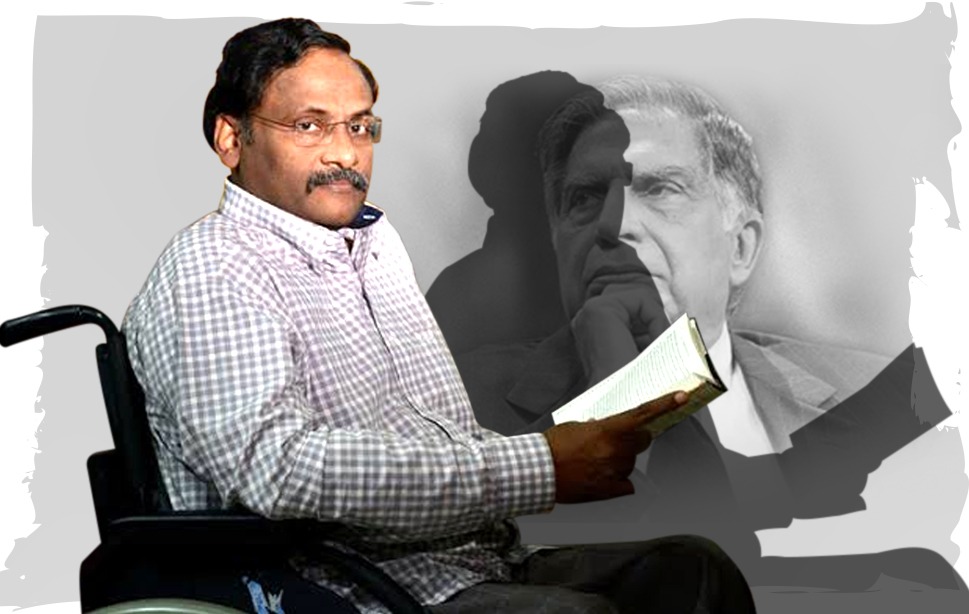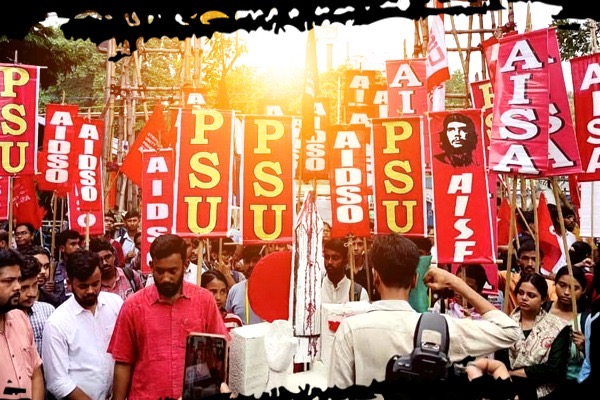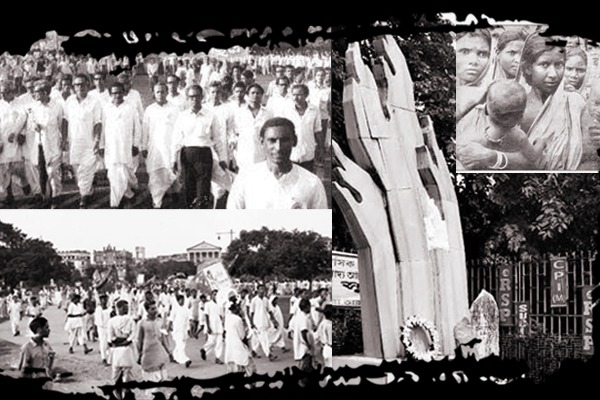The mountains of Nepal have witnessed feudal rule, imperial pressures, popular uprisings, and revolutionary fervor. Yet, the aspirations of the majority—peasants, workers, and marginalized communities—have repeatedly been frustrated by comprador elites and foreign powers.
The collapse of the Shah monarchy, the decade-long Maoist insurgency, and the 2006 People’s Movement marked historic victories for democracy and popular participation. Yet today, decades later, the promise of social justice and economic equity remains largely unfulfilled. The crisis is rooted not only in domestic political instability but also in the pervasive influence of external powers and the compromise of revolutionary movements.
Nepal’s parliamentary democracy has repeatedly failed to deliver meaningful reforms for the working class and rural population. Political fragmentation, corruption, and short-term coalitions have weakened governance. Local elites, both from traditional aristocracy and emergent political classes, often act as intermediaries for foreign interests rather than representatives of popular aspirations. Consequently, ordinary Nepalese face persistent challenges: unemployment, land insecurity, and limited access to social services.
This article analyzes Nepal’s crisis from a socialist and class-based perspective, exploring: historical patterns, geopolitical pressures, the risk of “Color Revolutions,” the failure of revolutionary leadership, and the potential for a working-class-led socialist reconstruction.
Rising Uprisings in South Asia: Nepal’s Generation Z Takes the Streets
In recent years, South Asia has witnessed a wave of mass uprisings. In 2022, Sri Lanka’s Aragalaya (People’s Struggle) movement forced a sitting president to resign. In 2024, Bangladesh saw a student-led movement bring an end to decades long rule. Pakistan continues to teeter under street clashes and political deadlock. And now, it is Nepal’s turn.
The Himalayan Republic of Nepal is facing its most severe unrest in decades. A storm of protests has engulfed Kathmandu and other major cities, led primarily by the younger generation—Generation Z. The movement is fueled by a volatile mix of corruption, failed governance, and a sudden clampdown on digital freedom. So far, 19 people have been killed and hundreds injured, while the army has been deployed on the streets.
Casualties are expected to rise as students dismantle barricades, clash with police, and even enter the parliament premises. Scenes of unrest have sent shockwaves across the region. Once perceived internationally as a peaceful tourist haven, Nepal today has become a stage for popular uprising.
The spark for this unrest was a sudden government decision: shutting down over two dozen social media platforms overnight. Facebook, Instagram, WhatsApp, YouTube, and X (formerly Twitter) were blocked, leaving only TikTok operational due to compliance with government registration requirements. Officials justified the move by citing “violations, hateful content, and online misuse.”
To young Nepalis, however, it was blatant censorship—an attack on their freedom of expression, their right to organize, and their very survival in the digital age. What began as small localized gatherings quickly escalated into mass protests spreading through Kathmandu, Pokhara, Biratnagar, and Bharatpur. Protesters broke police barricades, set fire to government vehicles, and even attacked the parliament building.
The state responded with force. Streets were filled with gunfire, rubber bullets, and tear gas. Baton charges left many bloodied. Hospitals became overwhelmed, curfews and roadblocks isolated neighborhoods, and troops were deployed in city centers.
Yet the protests did not subside—they grew larger and more determined. Young people view the government as clinging to power through repression. What began as a demand for digital rights has transformed into a struggle for the country’s democratic future.
The ruling elite assumed that blocking social media would silence opposition. The opposite happened. Digital platforms became a rallying point for slogans, mobilization, and activism. “Stop corruption, not social media” has become the movement’s defining chant, exposing the deeper wound: decades of corruption and impunity plaguing Nepali politics.
Nepal’s political landscape has long been unstable and rife with scandal. Governments rise and fall like clockwork. Coalitions fracture over trivial rivalries. Leaders frequently switch parties. Yet the shadow of corruption remains constant.
In 2025 alone, several high-profile scandals came to light. The Minister for the Cabinet Secretariat resigned over bribery allegations. A former prime minister faces criminal charges. Airport construction fraud, embezzlement at Nepal Telecom, extortion in the immigration office—all sparked national outrage. Even gold smuggling and refugee scams involved top political leaders. Yet ordinary citizens see that major figures escape punishment, investigations drag on, and only lower-level officials face consequences.
Meanwhile, images of politicians’ children flaunting luxury brands went viral, earning them the nickname “Nepo Kids.” Hashtags like #NepoKids and #PoliticiansNepoBabyNepal spread widely. A stark comparison circulated: “Their children return with Gucci bags; our children return in coffins.”
This highlights a bitter reality: elite children return from foreign universities with luxury goods, while children from ordinary families return home in coffins after falling victim to unsafe migrant labor in Gulf countries.
The blocking of social media was thus not just an assault on free expression—it was perceived as a desperate attempt to shield the corrupt elite from accountability. Social media had become the stage where young people conducted “digital trials,” exposing corruption through memes, videos, and viral campaigns.
At the heart of this movement is Generation Z, Nepal’s largest demographic. Raised with smartphones, online platforms, and global connectivity, many face limited job opportunities at home. Trapped in a shrinking tourism and service sector, forced into precarious gig economy work, or leaving the country to join migrant labor forces whose remittances sustain Nepal’s economy, they are confronting systemic frustration.
Generation Z has channeled this frustration into organized protest, using memes, hashtags, and skits to highlight corruption as a betrayal of their generation. They coordinate marches through encrypted chats and offline networks. Placards on the streets echo viral online content. The boundary between online and offline activism has blurred, turning what was once purely digital cultural dissent into mass street-level political action.
Nepal, Imperialism, and the Unfinished Struggle for Socialism
Nepal’s political history is written in contradictions. From the centuries-old feudal monarchy to the decades-long people’s movements, every chapter has been a battlefield where liberation met betrayal. The fall of the Shah monarchy in 2008, following the decade-long Maoist insurgency and the mass uprising of April 2006, was celebrated as a historic victory of the Nepali people. Yet, seventeen years later, the promise of a workers’ and peasants’state remains unfulfilled.
Why? Because the dream of socialism has been systematically hijacked by imperialist interests and the comprador ruling elite. Behind the façade of democracy stands a puppet government, one that oscillates nervously between Washington’s Indo-Pacific Strategy and Beijing’s Belt and Road Initiative (BRI). Neither side represents the real aspirations of Nepal’s working class, yet both seek to exploit Nepal’s strategic geography and natural resources for their own global designs.
Imperialism’s Tight Grip
Nepal occupies a sensitive geopolitical position — sandwiched between India and China, with the Himalayas as both a shield and a corridor. The U.S. sees Nepal as a potential node in its Indo-Pacific Strategy, aimed at containing China’s rise and maintaining regional hegemony. Through “development aid,” military partnerships, and diplomatic maneuvering, Washington attempts to push Kathmandu into its orbit.
On the other hand, China’s BRI projects promise infrastructure development and economic growth, but they come with debt traps and strategic dependency. Beijing seeks a secure northern frontier, resource access, and influence over Himalayan trade routes. Nepal’s ruling elite — divided among competing factions — leverage these rivalries for their own survival, but the working class gains nothing.
The result is a political paralysis where decisions are made not in the interest of Nepali peasants or workers, but to appease one global superpower or the other. This subservience deepens dependency and undermines the possibility of genuine sovereignty.
The Betrayal of the Maoist Promise
The Maoist insurgency (1996–2006) mobilized millions of peasants, workers, and youth under the banner of “New Democracy” and people’s war. It promised to dismantle feudalism, expropriate comprador capital, and build a state rooted in class power.
But after entering parliamentary politics, the Maoist leadership abandoned its revolutionary path. Once militant slogans of “land to the tiller” and “power to the people” were replaced by fragile coalition bargaining, IMF-backed economic reforms, and concessions to foreign powers.
This shift produced widespread disillusionment among the working class. While the elite gained ministerial positions, the vast majority of peasants remain landless, workers face precarious jobs, and millions migrate to the Gulf and Malaysia in search of survival.
Impact on the Socialist World
Nepal’s unfinished revolution holds deep lessons for the global socialist movement:
- Imperialism Adapts Faster Than Revolutions While the Nepali Maoists were celebrating the monarchy’s fall, imperialist powers were already embedding themselves within Nepal’s economy and institutions. Without a clear anti-imperialist strategy, any “people’s government” risks becoming a façade.
- The Crisis of Revisionism
The integration of former revolutionaries into the neoliberal framework has demoralized mass movements across South Asia. For socialist forces worldwide, Nepal illustrates how ideological compromises can dismantle decades of struggle in just a few years. - Global North vs. Global South Contradictions
Nepal today represents a microcosm of global contradictions — where smaller states are forced to choose sides between imperial blocs while their sovereignty erodes. For socialist forces, this highlights the urgent need for South-South solidarity against both U.S.-led hegemony and Chinese state-capitalist expansionism.
A Socialist Road Ahead
For Nepal, the path forward cannot lie in choosing between Washington and Beijing, or between neoliberal democracy and authoritarian dependency. The workers and peasants must reclaim their unfinished revolution by:
- Building independent mass organizations of laborers, peasants, and students.
- Resisting both U.S. militarization under the Indo-Pacific Strategy and Chinese extractive projects under the BRI.
- Reigniting the dream of a people’s republic rooted in socialist planning, agrarian reform, and democratic control of natural resources.
- Linking Nepal’s struggles with regional socialist movements—from India’s farmers’ protests to Bangladesh’s labor uprisings.
Nepal’s story is not one of failure, but of interrupted potential. Its workers and peasants have risen repeatedly—against monarchy, against feudalism, and against neoliberal subjugation. Yet each time, imperialism and its local allies have redirected that energy into safe parliamentary channels.
The global socialist movement must see Nepal not as a cautionary tale, but as a call to deepen international solidarity. Until the shadows of history are confronted—until imperialism is dismantled and class power restored—Nepal will remain trapped between rival empires.
The struggle is far from over.
Geopolitics Behind the Current Crisis: Nepal as a Battleground of Empires
On the surface, Nepal’s recent political turbulence might seem like nothing more than party infighting, endemic corruption, or social discontent. Coalition governments collapse, protests erupt, and parliament stalls. But a deeper look reveals that these domestic crises are inseparable from global strategic contests — where Nepal is not a sovereign actor but a pawn in imperial rivalries.
The U.S. and the Indo-Pacific Strategy
Washington’s interest in Nepal is far from benign. The U.S. seeks to integrate Nepal into its Indo-Pacific Strategy, a grand design aimed at containing China’s rise in South Asia. Nepal’s proximity to Tibet and the Himalayan plateau makes it strategically vital. Military partnerships, training programs, “democracy promotion,” and aid packages are all instruments of influence. These initiatives, though framed as supportive of development and stability, function primarily to embed U.S. presence in a region historically resistant to foreign domination.
For the Nepali working class and peasantry, this external interference manifests as political instability, resource diversion, and an erosion of sovereignty. Policies dictated by foreign agendas often prioritize geopolitical alignment over social welfare — leaving Nepal’s marginalized communities to bear the cost.
China’s Belt and Road Ambitions
Meanwhile, Beijing pursues a state-capitalist expansion, leveraging the Belt and Road Initiative (BRI) to transform Nepal into a gateway for trade, infrastructure, and influence. Railways, hydropower projects, and strategic investments promise modernization, yet they also increase Nepal’s debt dependency and strategic vulnerability.
For some of the socialist thinkers, this is, a seemingly cooperative project that quietly extracts wealth, deepens inequality, and co-opts the elite while leaving the working masses disenfranchised.
India’s Persistent Dominance
Nepal’s southern neighbor, India, has historically exercised unequal influence over its Himalayan neighbor — politically, economically, and culturally. Even as Nepal diversifies its international engagements, New Delhi continues to assert its regional supremacy, supporting political factions that align with Indian interests, controlling trade routes, and influencing energy and resource policies.
The result is a domestic arena fractured by external pressures. Parties are compelled to respond not only to popular demands but also to triangular pressures from Washington, Beijing, and New Delhi. Policies are shaped more by diplomatic expediency than by the needs of peasants, workers, and ordinary citizens.
Nepal as a Buffer Zone
Caught in this triangular tug-of-war, Nepal is increasingly becoming a geopolitical buffer rather than a sovereign state. This bufferization has several consequences:
- Political Instability: Governments are easily toppled, coalitions crumble, and reforms stall.
- Economic Exploitation: Large-scale infrastructure and trade projects often benefit foreign investors and local elites, not the majority of the population.
- Suppressed Mass Movements: Genuine calls for land reform, labor rights, and socialist policies are sidelined in favor of policies acceptable to the imperial blocs.
In essence, Nepal’s domestic crises cannot be separated from its role in global power politics. Its sovereignty is constrained, and the working class is caught between the ambitions of external powers and the compromises of local elites.
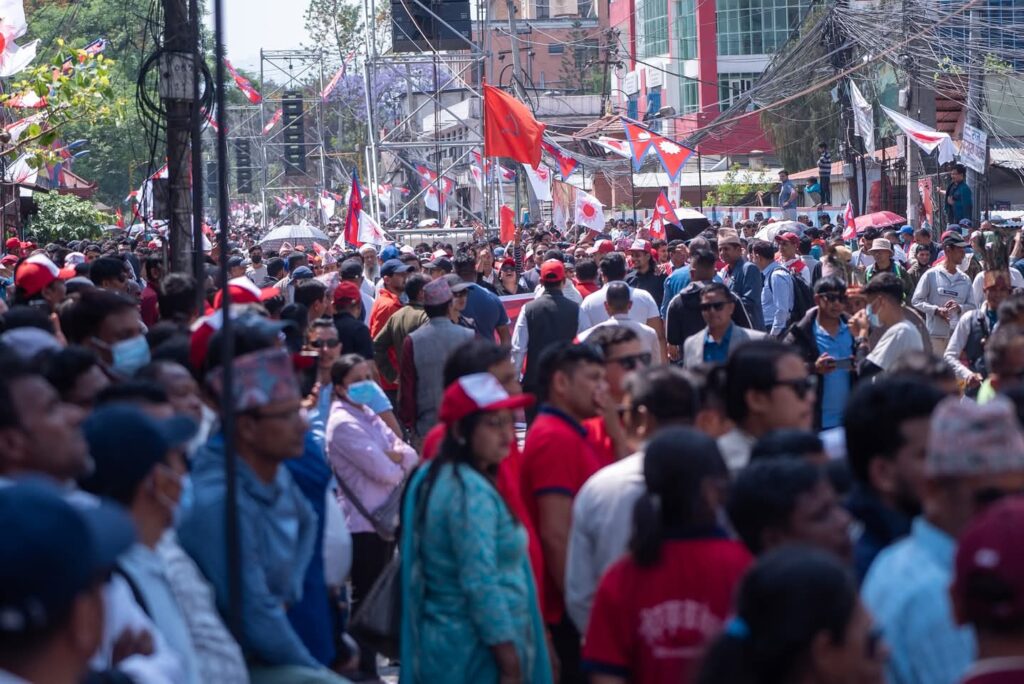
Socialist Perspective: Lessons and Warnings
From a socialist standpoint, Nepal’s geopolitical predicament offers a cautionary yet instructive tale:
- External domination undermines class struggle: Without an independent anti-imperialist strategy, even revolutionary gains are vulnerable to reversal.
- Elite collaboration strengthens imperialism: Local political elites act as intermediaries, ensuring that foreign powers shape domestic policies while the masses remain marginalized.
- The necessity of international solidarity: Nepal’s struggle is not isolated. Socialist and workers’ movements worldwide must support anti-imperialist and democratic struggles in smaller nations to counter global hegemonic pressures.
The triangle of influence — U.S., China, India — transforms Nepal’s internal crises into a global strategic chessboard, where ordinary Nepalis are the unacknowledged players, bearing the brunt of policies designed far from Kathmandu.
Nepal’s current crisis is not merely a domestic issue; it is a reflection of global capitalist and imperialist dynamics. For socialism to take root, the Nepali working class and peasantry must reclaim agency over their political and economic destiny, resist foreign interference, and build an independent revolutionary movement capable of breaking the cycle of puppet governments, elite compromises, and imperialist exploitation.
Only then can Nepal’s mountains, long shadows of empire and monarchy, witness the dawn of a truly sovereign and people-centered society.
The Possibility of a ‘Color Revolution’: Nepal at Risk of Manufactured Unrest
Observers of Nepal’s political scene have increasingly drawn parallels between its ongoing unrest and the so-called “Color Revolutions” that have transformed states in Georgia, Ukraine, Hong Kong, and Kazakhstan. These revolutions, orchestrated by Western imperialist powers, are not spontaneous eruptions of popular discontent but carefully engineered political operations designed to reshape national policies and install compliant governments.
A Familiar Pattern
The playbook for a Color Revolution is strikingly consistent:
- Mobilization of Youth: Young people are engaged as the vanguard of “democratic” movements, often through appeals to generational identity, civic duty, or anti-corruption sentiments. While genuine grievances exist, they are manipulated and amplified to serve foreign agendas.
- Media and NGO Influence: Social media campaigns, foreign-funded NGOs, and foreign-backed think tanks craft narratives that portray the existing government as illegitimate or oppressive. This creates artificial polarization, while alternative political actors aligned with imperial interests are positioned as the solution.
- Policy Reorientation: Once unrest reaches a tipping point, external powers leverage it to influence policy, restructure governance, and ensure that the new state machinery aligns with their geopolitical and economic interests.
Nepal in the Crosshairs
Nepal, with its fragile political institutions and history of elite compromises, presents an ideal terrain for such operations. Evidence of Western-funded NGOs, media campaigns, and digitally-mediated youth mobilization has been growing. While these initiatives are framed as promoting “civil society” or “democracy,” they often mask imperial objectives — undermining national sovereignty and preparing the ground for policies favorable to foreign powers.
For instance, debates around constitutional amendments, infrastructure projects, or foreign investment are increasingly influenced not by domestic needs but by narratives crafted abroad, subtly pushing Nepal into the orbit of the West’s Indo-Pacific strategy.
Implications for the Working Class and Peasantry
From a socialist perspective, the specter of a Color Revolution carries significant dangers:
- Exploitation of Genuine Grievances: Economic inequality, youth unemployment, and political disillusionment are real issues. Imperialist interventions, however, divert these grievances toward foreign-aligned agendas, preventing a true class-based resolution.
- Erosion of Sovereignty: Domestic policy is gradually subordinated to external strategic interests, leaving workers, peasants, and marginalized communities to bear the social and economic costs.
- Distraction from Socialist Mobilization: Efforts to build independent labor unions, peasant movements, and socialist parties are sidelined as imperial-backed narratives dominate the political discourse.
Historical Lessons
Global experiences suggest that Color Revolutions rarely benefit the majority. In Georgia, Ukraine, and Hong Kong, initial protests promising “democracy” eventually led to economic liberalization, privatization, and foreign control, while social inequalities deepened. Nepal risks a similar fate if its unrest is co-opted — the aspirations of the working class and peasantry could be diverted, leaving the country politically unstable and economically subservient.
A Socialist Response
To counter the threat of a Color Revolution, Nepal’s progressive forces must:
- Raise Awareness: Educate the masses about the hidden agendas of foreign-backed movements while validating genuine local grievances.
- Build Independent Mass Organizations: Strengthen unions, farmers’ cooperatives, and youth collectives that are autonomous from imperial funding.
- Promote Anti-Imperialist Discourse: Ensure that political debates focus on Nepalese sovereignty, class interests, and national development, rather than narratives imposed externally.
- Connect Locally and Regionally: Forge solidarity with regional socialist movements to resist external manipulation collectively, ensuring that Nepal’s struggles are part of a broader anti-imperialist front.
Nepal’s political unrest is not just a domestic issue; it is a potential battlefield for global power politics. The warning signs of a Color Revolution — foreign funding, youth mobilization, media manipulation — demand vigilance. For socialism to take root, the working class and peasantry must reclaim political agency, resist both foreign intervention and comprador elites, and build a movement capable of transforming genuine grievances into revolutionary change.
Only then can Nepal avoid becoming a stage for external ambitions and instead become a society where sovereignty, social justice, and class emancipation guide the future.
The Working Class and the Socialist Alternative: Reclaiming Nepal’s Revolution
From a socialist perspective, Nepal’s political and social crisis is fundamentally a crisis of class power. The roots lie not merely in elite rivalry or geopolitical pressures, but in the failure of the working class and peasantry to establish genuine political empowerment.
After the 2006 people’s uprising and the subsequent entry into parliamentary politics, the Maoist leadership abandoned the revolutionary path. They embraced parliamentary diplomacy, formed coalitions with opportunistic elites, and accepted the very structures they once vowed to overthrow. Power slowly concentrated in the hands of a middle-class elite, whose primary loyalty lay with imperial patrons and neoliberal frameworks rather than the Nepali masses.
The working class, once the engine of revolutionary change, was left politically marginalized and economically exploited.
Consequences for Nepal’s Working Class and Peasantry
The impact of this abandonment is profound and multifaceted:
- Youth Migration: Lacking local opportunities, young Nepalis are forced to seek employment abroad, especially in the Gulf States and Malaysia. These migrant workers face exploitation, unsafe working conditions, and dislocation from their families — a stark reflection of imperialist-driven economic dependency.
- Agrarian Crisis: Farmers struggle under debt, insecure land tenure, and predatory practices. Despite Nepal’s agrarian majority, the rural population has little control over land or resources, leaving them vulnerable to both local elites and international capital.
- Precarious Labor Conditions: Domestic and overseas workers remain trapped in low-wage, unsafe, and unregulated jobs. The state, dominated by elites, prioritizes foreign investment and international appeasement over worker protections, further entrenching social inequality.
- Sovereignty Erosion: The lack of a strong working-class political presence has made Nepal increasingly subservient to external powers — the U.S., China, and India — each vying for strategic and economic leverage. The interests of ordinary Nepalis are subordinated to imperial agendas.
The Socialist Alternative of Rebuilding Nepal
The only viable path forward is a radical reconstruction of the state under working-class leadership. This entails:
- Reclaiming Class Power: Organizing labor unions, peasant collectives, and youth movements independent of elite or foreign funding. Political power must be rooted in mass participation and class consciousness, not parliamentary compromise or elite patronage.
- Land and Agrarian Reform: Redistributing land and securing tenure for farmers is essential. Agricultural production should serve social needs, not export-oriented imperialist markets.
- Workers’ Rights and Labor Security: Domestic and overseas labor policies must guarantee fair wages, safe conditions, and social protection, breaking the cycle of exploitation that forces Nepalis into precarious labor abroad.
- Anti-Imperialist Sovereignty: Nepal must resist becoming a buffer state or client of foreign powers. All development, trade, and infrastructure initiatives should be planned and executed in the national interest, under the oversight of mass organizations of workers and peasants.
- A Revolutionary Vision: The socialist alternative envisions a state guided by working-class democracy, where economic planning, resource allocation, and political decision-making serve the majority rather than elites or external powers.
Nepal’s current crisis is not simply a question of political mismanagement; it is a failure of class strategy and revolutionary continuity. The Maoist abandonment of radical change allowed middle-class elites and imperialist forces to fill the vacuum, leaving workers, peasants, and youth vulnerable.
For Nepal to realize its revolutionary potential, the working class must reclaim agency, rebuild autonomous mass organizations, and advance a program of socialist reconstruction. Only then can Nepal break free from the twin oppressions of internal elitism and external domination, and transform its mountains—long shadows of empire—into the foundation of a sovereign, people-centered socialist society.
Lessons for South Asia: Nepal as a Mirror of Regional Struggles
Nepal’s turmoil is far from an isolated incident. The political instability, elite compromises, and foreign manipulation seen in Kathmandu are symptomatic of broader pressures across South Asia. States such as Bangladesh, Sri Lanka, Maldives, Bhutan, and beyond face similar strategic tensions, where domestic politics are continuously shaped—and often distorted—by imperial competition and regional hegemony.
Key pressures include:
- U.S. Imperial Ambitions: Through military partnerships, development aid, and “democracy promotion,” Washington seeks to secure strategic footholds across the region, often subordinating domestic interests to global power projections.
- China’s Rising Influence: Through infrastructure investments, trade corridors, and state-capitalist expansion under the Belt and Road Initiative, Beijing binds smaller nations into economic dependency, leveraging both resources and strategic location.
- India’s Regional Hegemony: New Delhi continues to assert its influence, particularly in smaller neighbors like Nepal and Bhutan, using political alliances, economic leverage, and cultural ties to maintain dominance over regional affairs.
Without a united front led by workers and peasants, South Asia is at risk of becoming a perpetual battleground of proxy wars, color revolutions, and external manipulation. Political instability will not be resolved by elite negotiations or foreign interventions; it can only be overcome through class-based empowerment and anti-imperialist solidarity.
The Struggle for Real Independence
Nepal’s current unrest underscores a fundamental truth: independence is more than a national flag or ceremonial sovereignty. True freedom requires:
- Economic Sovereignty: Control over natural resources, production, and national capital—ensuring that profits serve the people rather than foreign powers or local elites.
- Political Autonomy: A government accountable to the working class and peasantry, capable of resisting external pressures and shaping policies in the interest of the majority.
Without these, Nepal risks sliding into the role of “another Afghanistan”— a pawn caught in the crossfire of global and regional power struggles, where the sovereignty of the people is subordinated to imperial ambitions.
Regional Implications for South Asia
The lessons from Nepal are directly transferable to the broader South Asian context:
- Bangladesh: Persistent U.S. and Chinese influence in trade, infrastructure, and governance poses risks of economic dependency and elite co-optation.
- Sri Lanka: Debt dependency on China and Western economic pressures has already created political turbulence, demonstrating the dangers of external manipulation.
- Maldives and Bhutan: Small states face overt and covert pressures from competing powers, highlighting the vulnerability of nations without robust working-class leadership.
The pattern is clear: imperial competition thrives where mass movements are weak, disorganized, or co-opted. Without independent mobilization, each nation becomes vulnerable to instability, policy capture, and the erosion of sovereignty.
The Socialist Alternative: Building Power from the Ground Up
The takeaway is unmistakable: true liberation demands a socialist alternative. This involves:
- Resisting Imperialism: Actively challenging foreign domination and external manipulation, while advocating for policies that serve the majority rather than elite or foreign interests.
- Dismantling Puppet Regimes: Removing governments that act as intermediaries for external powers, and replacing them with democratically accountable, class-based leadership.
- Empowering Workers and Peasants: Establishing mass organizations, unions, and cooperatives that serve as the foundation of people-centered governance.
- Regional Solidarity: Connecting struggles across South Asia to resist imperial agendas collectively, building a network of anti-imperialist socialist forces capable of defending sovereignty and social justice.
Nepal’s ongoing crisis serves as a cautionary mirror for all of South Asia. Without a radical, working-class-led reorganization of politics, nations in the region remain susceptible to elite betrayal, foreign manipulation, and destabilization.
The struggle for independence, therefore, is far from symbolic. It requires building a new society rooted in socialism, where sovereignty, social justice, and economic equality are prioritized over the interests of imperial powers or comprador elites.
Only through such a path can Nepal, and South Asia as a whole, break the cycle of subjugation and achieve genuine liberation— a liberation grounded in the power of workers, peasants, and the majority of the people. Nepal’s crisis today is a reflection of the unresolved tension between domestic aspirations for social justice and external pressures from global and regional powers. Its working class and rural population remain caught in a web of elite compromise and foreign intervention. Genuine change depends on grassroots empowerment, socialist-oriented reforms, and the assertion of national autonomy against imperialist influence.

